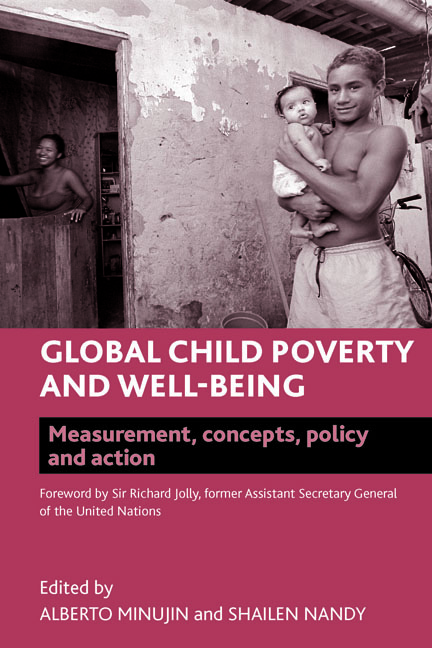twenty-two - Investment in social security: a possible United Nations model for child benefit?
Published online by Cambridge University Press: 07 September 2022
Summary
We live in a world where children are accorded priority emotionally and politically. Five of the eight Millennium Development Goals (MDGs) of the United Nations (UN) are directed at children: one is to eradicate extreme poverty and hunger, another to drastically reduce under-five mortality, a third to reverse the spread of HIV/AIDS, malaria and other diseases, and the fourth and fifth to ensure full and genderequal schooling (UN, 2000). Yet international leaders have conceded that declared progress is too slow to meet the goals by 2015.
The policies offered to protect children's welfare have been ineffective (UNICEF, 2004, 2005) – most are over-generalised and indirect or selectively helpful only to very small numbers. Children's social security is not defined precisely but often wrapped up in the ‘family’ or ‘household’ benefits to which their parents may or may not be entitled. The scale of their rights to income in developing countries has still to be defined, categorised for different age groups in different locations, and endorsed by representative government.
Previous work has shown the viability and affordability of social security in national economies, and illustrated promising initiatives in middle- and low-income countries to accelerate the growth of social security systems. This chapter aims to take three steps further: (a) to focus on children, who have a greater risk of being in poverty than adults and no opportunity to contribute to their own social security; (b) to pin down the nature and causes of child poverty to improve policy effectiveness; and (c) to demonstrate that international funds have to be found, and can be found quickly, to match national resources to meet child poverty directly. In this chapter I discuss:
• the consequences of poverty and multiple deprivation for child survival and health;
• child rights as the appropriate framework for measurement, analysis and the construction of policy;
• the need to reveal the extent of international responsibility for funding anti-poverty strategies;
• the recent disappointing history of international finance;
• and, as the most practical alternative, the use of a currency transfer tax to build up a UN Investment Fund for child benefit.
- Type
- Chapter
- Information
- Global Child Poverty and Well-BeingMeasurement, Concepts, Policy and Action, pp. 545 - 566Publisher: Bristol University PressPrint publication year: 2012



